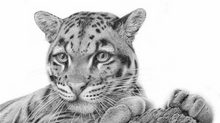"Discovering the Fascinating World of Baboons: Physical Characteristics, Behavior, and Conservation
- Vincenzo De Luca
- May 12, 2023
- 2 min read
Baboons are a type of Old World monkey that belong to the genus Papio. They are intelligent and social animals that have been the subject of scientific study and cultural fascination for many years. In this article, we will explore the physical characteristics, behavior, and conservation status of baboons, and what makes them such a unique and important part of our natural world.
Physical Characteristics of Baboons
Baboons are large, muscular primates with elongated muzzles, sharp canine teeth, and powerful jaws that allow them to consume tough plant material and prey items. They have long, powerful limbs and grasping hands and feet that enable them to move quickly and adeptly through their environment. The size and coloration of baboons vary depending on the species and geographic location.

Behavior and Social Structure of Baboons
Baboons are highly social animals that live in large, hierarchical groups known as troops. These troops can contain up to several hundred individuals and are led by a dominant male, or alpha male. Females are also an important part of baboon society, and their rank within the group is based on their age, experience, and ability to form alliances with other females. Baboons are active during the day and spend much of their time foraging for food, communicating with each other using a variety of vocalizations, facial expressions, and body postures, and engaging in grooming behavior to strengthen social bonds.

Conservation Status of Baboons
Several species of baboon are considered to be of conservation concern due to habitat loss, hunting, and disease. The IUCN lists the Guinea baboon as Vulnerable, the olive baboon as Least Concern, and the other species as Near Threatened. Efforts are underway to protect baboon populations through habitat conservation, disease monitoring, and education programs that promote coexistence between baboons and humans.
In conclusion, baboons are fascinating and complex animals that play important roles in their ecosystems. By understanding their physical characteristics, behavior, and conservation status, we can work to protect these remarkable animals and ensure their continued survival in the wild.














































Comments